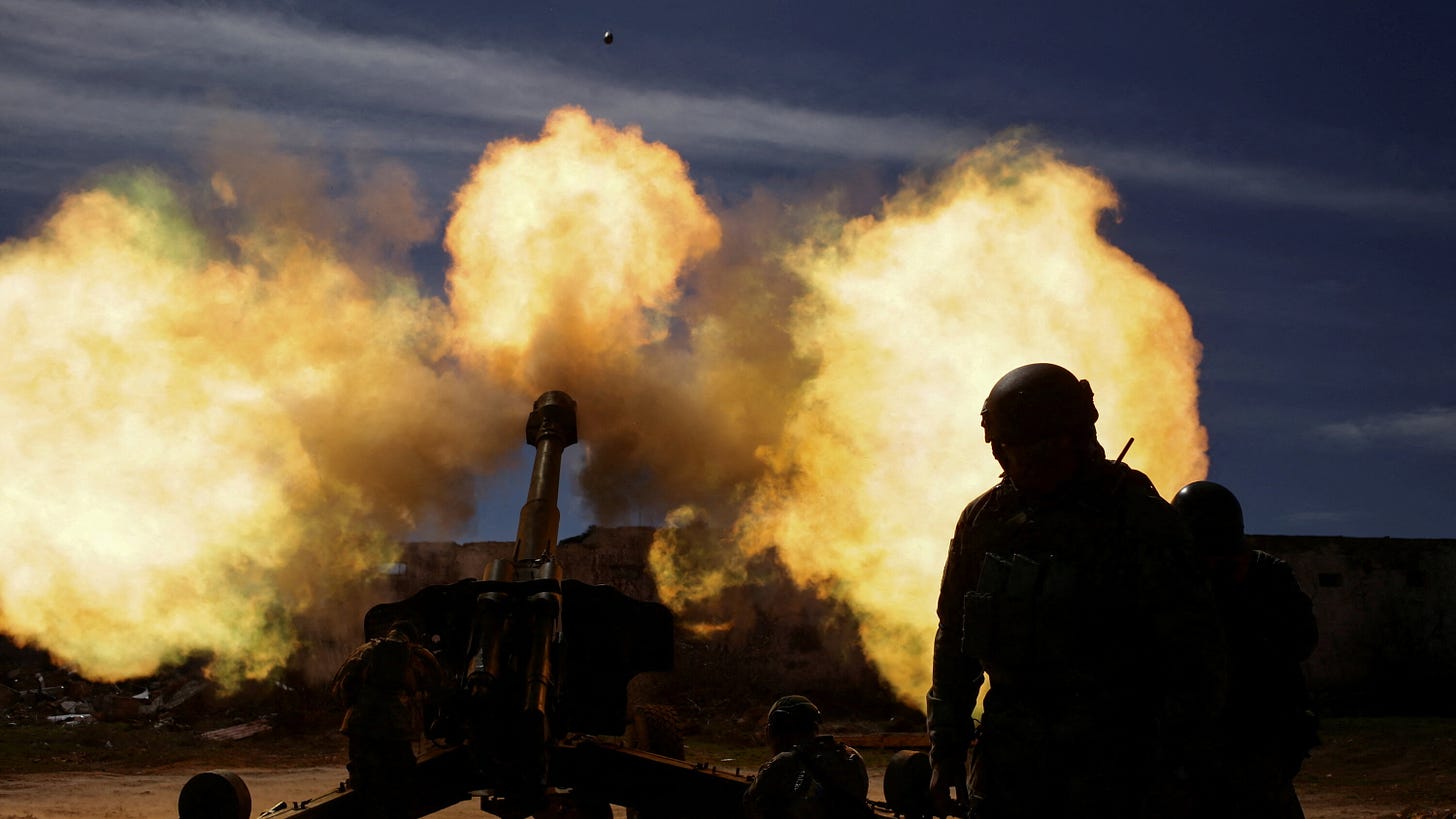While you’re at it, remember the one, too: 155 mm. That’s the size of the projectile fired by all the guns with the other numbers, including the lightweight M777 howitzer, the M109 self-propelled howitzer – both American-manufactured – and the German-made Panzerhaubitze Pzh 2000 self-propelled howitzer. More than 100 of these deadly artillery pieces are right now on their way to Ukraine from stockpiles held by the U.S., the Netherlands, Belgium, and Italy. Great Britain has also committed to sending a yet-to-be-determined number of mobile lightweight towed 155 mm howitzers, as well as some of its AS90 tracked 155 mm guns mounted on heavy tank platforms. Canada has already sent four of its M777 howitzers and is ready to send more, and France has committed to sending an unspecified number of their CAESAR self-propelled 155 mm howitzers.
Heavy artillery weapons like the 155 mm howitzer have been around for decades, but these aren’t the “dumb” big cannons that were used in World War II and Vietnam. The American, German, British and Canadian big guns, both self-propelled and towed varieties, are wholly computerized. The howitzers use slightly different fire control systems, but most include a weather sensor that gauges wind, temperature, and humidity (all of which affect accuracy), a built-in GPS system that automatically and precisely locates the gun’s position, and some include a phased-array radar system that tracks the trajectory of each shell fired and uses that data to correct subsequent rounds fired by the same gun.
In addition, the U.S. and other countries are sending several different counter-battery radar systems such as the AN/TPQ-36 Firefinder radar, designed to track incoming fire from enemy mortars, howitzers and rockets. The radar continuously sweeps a 90 degree sector looking for incoming fire and can track 10 separate airborne rounds simultaneously. Data collected from the counter-battery radar is fed into the fire control systems of the various 155 mm and 105 mm howitzers, automatically aiming the guns to fire back at the artillery batteries that shot the incoming rounds. In less than a minute, heavy artillery fire can be brought to bear on any Russian cannon firing at Ukrainian positions.
All of the mobile 155’s have auto-loading capability, meaning that each artillery round is automatically inserted into the breach of the gun, requiring the soldier serving as loader to provide only the correct number of powder charges for each round fired. Some of the mobile 155’s can fire three shells in only 10 seconds, and can maintain eight rounds a minute over a longer period of time.
All of the 155 mm howitzers are capable of firing ordinary high explosive rounds 15 miles, and the modern versions of the big guns can fire a new M982 guided munition with very high accuracy a distance of 25 miles. The new guided munitions nearly double the area a battery of six howitzers can cover.
With Russian operations moving into the vast flatlands of the Donbas, Ukraine will be able to deploy these heavy artillery pieces to great effect, especially when used with counter-battery radar systems. The U.S. is sending about 200,000 rounds of 155 mm ammunition along with the artillery pieces themselves.
Also in the same weapons package on its way to Ukraine are several different kinds of drones, including two variations of the Switchblade drone, a kamikaze-type weapon designed to be sent from front-line positions as a weapon against both enemy soldiers and armored vehicles. The U.S. is also sending more than 100 Phoenix Ghost drones, an unmanned aerial platform that can be used for intelligence gathering or to launch precision-guided missiles against Russian tanks and other armored vehicles.
U.S. and NATO countries were reluctant to send heavy artillery and armed drones earlier in the war, supposedly because they were “offensive” weapons. When your country has been invaded by a foreign army that is killing thousands of civilians and destroying entire cities like Mariupol, which weapons are offensive and which are defensive is a distinction without a difference, in my humble opinion.
It's past time we supplied Ukraine with these weapons. The only thing we’ve been doing is wasting them in Iraq and Afghanistan. At least now they’ll be aimed at somebody who needs and deserves the fearsome killing power they can deliver.




Fifty years ago, I was a battery commander of a 155 SP battery. The technology of today make the ones I commanded look like catapults. Gettin’ old!
May they use them all to save Ukraine.